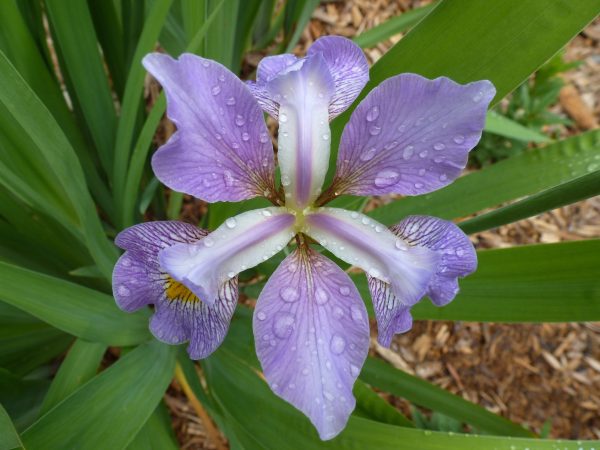Bull tallow: Bane of Piedmont gardeners

Red clay. It’s the bane of Piedmont gardeners. Heavy and lumpy when wet, it dries as hard as a terra cotta pot. We spend bundles of money on soil conditioners to make it friable. We complain about it as much as the English do about chalk, the highly alkaline soil found throughout much of the country that makes it difficult to grow rhododendron and other coveted acid-loving plants. But as the gardens at Hidcote Manor illustrate, even chalky soil can be amended to remarkable effect.
But after a year of gardening at our new house in Charlotte, I’ve developed a bittersweet fondness for red clay. I’m actually grateful when my shovel hits a patch. That’s because part of my yard is even worse than red clay; it’s the dreaded soil commonly referred to as bull tallow. This colloquial term can be loosely applied, but in our region it’s generally associated with a soil type known as “Iredell loam.” A 1917 soil report for Union County (courtesy of the N.C Department of Agriculture) described it as “dark gray to dull brown loam” with a subsoil of “dingy yellow or yellowish brown, sticky, waxy, impervious clay.” It is “readily recognized from other soils by the peculiar putty-like character of the subsoil.”
Yes, it’s all that, and more. I’ve even run across pockets of robin’s egg blue and Hermes orange. If I were to see this soil out West, exposed and eroded into hoodoos, I’d think it was beautiful. But here, it lurks underground like some mythic demon, seething and festering in its own rage. A stink wafts up at the turn of a spade.
To help me understand this beast, I talked to Martha Cary “Missy” Eppes, PhD, associate professor of earth sciences at UNC Charlotte. She said the swath in my yard probably indicates that a vein or dike of magma long ago forced its way into a crack in the coarser diorite formation common over much of the Charlotte region. This intrusive material has weathered in situ to create an inorganic soil. That means it’s derived from the bedrock, not from an accumulation of decomposing plant material at the surface. The term Iredell loam is a misnomer. It’s composed of very fine particles, which makes it a type of clay, not a loose, loamy mix of sand and silt.

Bright colors, such as the blue shown here, are often found in bull tallow. Photo: Ruth Ann Grissom
Bull tallow is also characterized by its high liquid limit and high plasticity. It contains minerals that allow it to absorb more water into its molecular structure than other types of clay. The blue spots I’ve found are indicative of fully saturated areas. All the iron has been leeched out, and microbes in the soil have used up all the oxygen. When these anoxic areas dry out, they turn from blue to orange.
All this leads to extreme swelling and shrinking. Large fissures often appear on the surface. A friend in the Uwharries said his grandpa recalled the ground cracking open at an old cemetery in Stanly County dating back to the Revolutionary War. This made a lasting impression on him. As boys, he and his friends thought it was spooky. “They should have never put that graveyard there,” he’d say. “It was nothing but bull tallow.”
Homeowners should be even more frightened. Bull tallow’s propensity to expand and contract can wreck the foundation of a house. For a humorous take on this phenomenon, see Mary Newsom’s blog post from 2008, “A different kind of bull – – – – – – – for Charlotte.” Luckily for us, our foundation has proven stable since 1926, but just to be safe, we hired a soil engineer and made special accommodations to support the foundation of our new addition.
The same is true for gardening. Bull tallow requires special attention. I’ve found it’s more compliant after a run of dry weather. I amend the soil as much as possible – working in copious amounts of organic matter such as cow manure and composted bark – and I choose plants that can tolerate heavy soil and wet feet. A surprising number of gorgeous natives are content with these conditions. Silky dogwood, sweetbay magnolia, swamp azalea, Virginia sweetspire, joe-pye weed, liatris, bee balm, swamp milkweed and ironweed are flourishing in my soggy garden.
Now, as I work the soil or sit on my porch with a cold beverage after my labor, I try to picture the swath of bull tallow snaking through my yard and its path into my neighborhood at large – most of it no doubt covered by houses, sidewalks and roads – and I have a greater appreciation for the unimaginable forces that have created this earth that sustains us, and this much-maligned dirt.